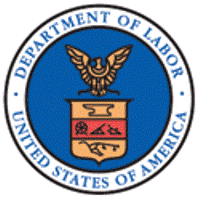
Article courtesy of SBAM Approved Partner ASE
Author: Michael Burns
With the publication of the Department of Labor’s exemption classification regulations, ASE has been publishing a number of articles addressing both that change and broader FLSA Wage and Hour compliance concerns. Just as the National Labor Relations Board (NLRB) created a plethora of compliance issues, so have the FLSA regulatory changes. And now, so too does the revision of the Exemptions Regulation. ASE sees this change to the regulations as an opportunity to review and relearn employer wage and hour practices on which HR departments may have gotten a bit rusty in recent years.
This week we focus on a couple of issues specific to the classification of salaried non-exempt. Complementing last week’s article “Complexities of Paying a Salary to a Non-Exempt Employee,” this article focuses on using a record-keeping method for salaried non-exempt employees.
A potential 4.2 million newly minted non-exempt employees will not only have to be paid at time and one-half for over forty hours worked in a week, but will also have to have their hours of work recorded. Employers will naturally want to find the most efficient ways to record those hours. One method suggested for salaried non-exempt employees is called the Alternative Timekeeping Requirement (29 CFR §516(c)). This section provides for a check-box approach to recording time for working a “fixed schedule.” The regulation states that an employer can “show the employee’s normal daily and weekly schedule as his or her hours worked” if:
- There is a “check mark, statement or other method” indicating that he or she in fact actually worked those hours, or
- The record is changed to show the “exact number” of hours worked for each day and for the workweek if the employee varied from the schedule.
This record-keeping approach should only be used when variations to hours worked are “unusual” or seldom or rarely happen. Where this method is used and a work variation (i.e., fewer or more hours) occurs, the exception can be noted on the “check mark” time form when that occurs.
This approach certainly seems simple and efficient, but employers will want to think hard about whether the approach is right for them or may cause more problems than it prevents.
Employers considering this approach to time keeping should consider:
- How likely it really is that, due to the inherent nature of such work, deviating from the schedule will be “unusual”, “seldom”, or “rare”; and
- Whether, instead, it will frequently be necessary to revise the records to show the actual amount of time worked, i.e., to enter an exception.
One concern that comes with putting time-keeping recording on “auto-pilot” using this approach is that, over time, the salaried non-exempt employee will fail to properly enter exceptions that actually occur, particularly if they happen frequently. Then when the employer is audited—or worse, sued—the employee reports it “was just understood that we would report the hours we were scheduled and not what we actually worked,” thereby causing the employer to violate the FLSA by failing to properly record-keep and failing to pay hours that were (at least) “suffered or permitted to work” time.
(The phrase “suffered or permitted to work” is a regulatory phrase the means the employer knew or should have known an employee worked, but then did not pay for those hours worked because they let them “work anyway” or did not care that the compensable work should have been paid for.)
Using the more traditional method of recording actual hours worked every day will generally head off this problem. The key is how frequently the employee’s actual schedule deviates from the official schedule in practice. If it happens rarely, then the check-mark method may be perfectly acceptable; but if it happens more than that, the check-mark method may carry too much risk for the average employer.
ASE will continue to provide information and updates to members on the Fair Labor Standards Act. ASE has scheduled its first session of a new class designed to refresh and update HR professionals’ understanding of the entire body of DOL Exemption Tests. This course will supplement the ASE Wage and Hour as well as the Wage and Salary Administration classes.